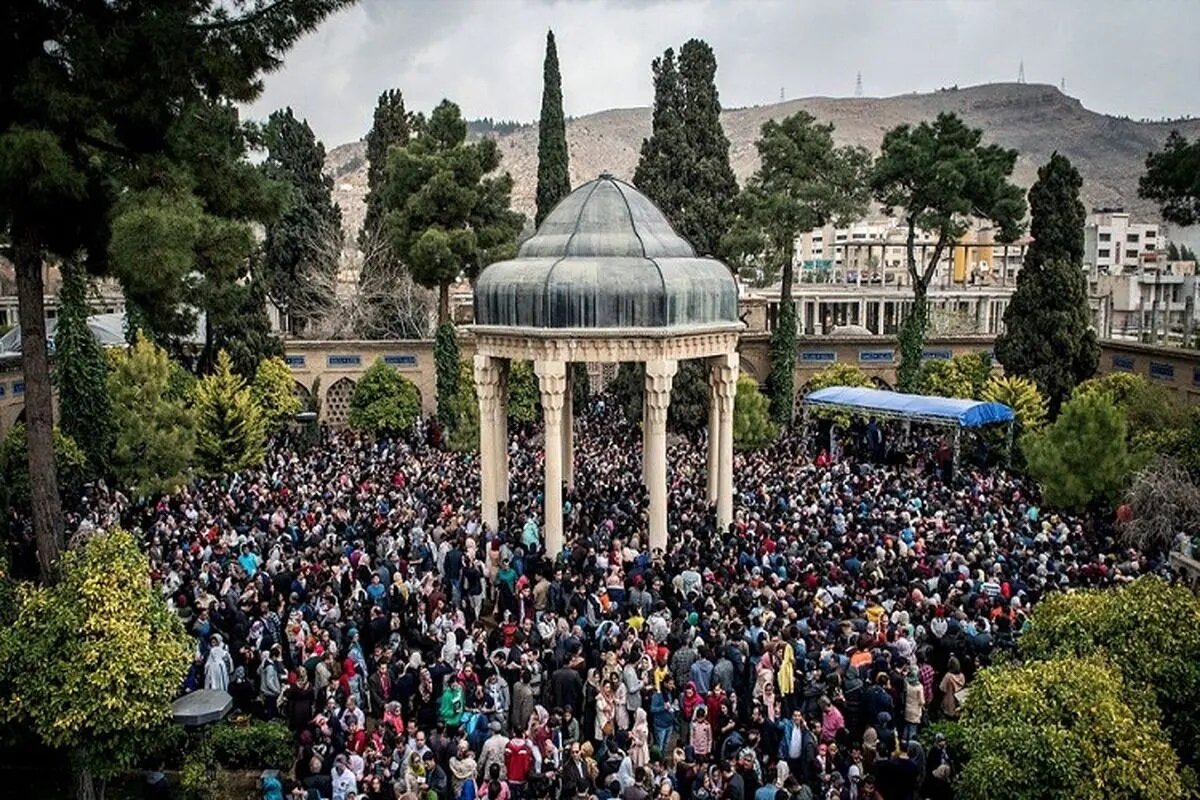Visits to Iran’s historical sites soar 28 percent y/y during Nowruz holidays

TEHRAN - During the two-week Nowruz holidays, which officially began on March 20, visitor numbers to Iran’s cultural heritage sites, museums, and historical landmarks saw a remarkable 28% year-on-year increase.
A total of 4,440,286 visits to the cited destinations were recorded during the Nowruz 1404 period (which officially started on March 20) compared to some 3,197,000 visits during the same time last year, IRNA reported.
April 2, 2025 (13th of Farvardin 1404) marked one of the busiest days, with 213,573 visits to cultural and historical sites across the country. Among the most visited attractions were Hafezieh, with 26,392 visitors, Persepolis (Takht-e Jamshid) with 21,294, and Sa’dieh with 18,549 visitors.
The cumulative visitor numbers from March 19 to April 2, indicate a strong interest in Iran’s cultural and historical heritage. Notable landmarks such as Persepolis, with 470,767 visitors, Hafezieh with 464,594, and Sa’dieh with 305,405 visitors, led the list of the most popular destinations. Other highly visited sites included Pasargadae with 205,950 visits, Karim Khan Citadel with 172,239, and the Fin Garden in Kashan with 157,927.
The substantial increase in visitors reflects the growth of domestic tourism and the public’s increasing interest in Iran’s rich cultural heritage, the report said.
However, on April 2, coinciding with the annual “Nature Day” (Sizdeh Bedar), all cultural heritage sites with green spaces, including Sa’dabad Palace, Niavaran Palace, Golestan Palace, and the National Museum of Iran, were closed to the public. This decision aimed to protect these historical sites from potential damage during the celebrations.
Marking one of the holiest days of the ancient Zoroastrian calendar, Nowruz is an annual event that now honors a common across Greater Iran with the birth of spring. Although celebrated in various different countries, the festive celebration promotes peace, prosperity, and solidarity within communities by recognizing the significance of pluralistic identities.
Nowruz is a historic rite observed annually on 21 March in many countries along the Silk Roads. This marks the New Year, announces spring, and the rebirth of nature.
This cross-cultural celebration means No –new– and rouz –day– in Persian. Therefore, Nowruz signifies new day, and symbolizes new beginnings. People from different religious and cultural backgrounds celebrate Nowruz. The return of spring has a great spiritual significance, symbolizing the triumph of good over evil, and joy over sorrow.
These invaluable traditions have been passed down from generation to generation along the Silk Roads. Nowruz provides an opportunity not only to enjoy ancient cultural customs, but also to promote peace and solidarity within towns and communities.
Over time, Nowruz has developed and expanded, incorporating new social, religious, and cultural influences. Although the traditions and customs of Nowruz vary from country to country, there are many unifying features. In most regions, before the festival people perform ritual dances such as leaping over fire and streams. Many households also replenish their water supplies on the last Wednesday of the year.
Another common ritual and widespread tradition is the preparation of a Nowruz table. The objects on the table symbolize purity, brightness, abundance, happiness, and fertility for the New Year. On Nowruz day, people feast, visit family members and friends, and exchange gifts. These practices are a good way to socialize with loved ones and strengthen deep-rooted bonds of friendship. Nowruz is also an occasion for traditional cultural activities, combining common practices with local customs, such as poetry, music, open-air festivities or local street performances.
In recognition of the importance of this ancient rite, Nowruz was inscribed on UNESCO’s Representative List of the Intangible Cultural Heritage of Humanity in 2009. Moreover, in 2010, the United Nations General Assembly proclaimed 21 March International Nowruz Day.
AM
Leave a Comment